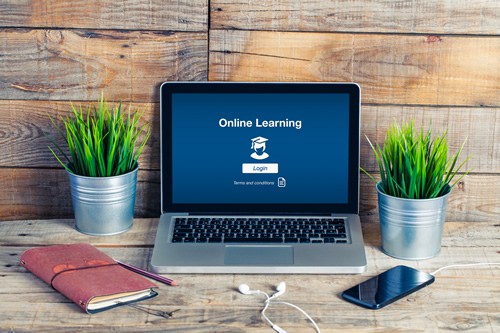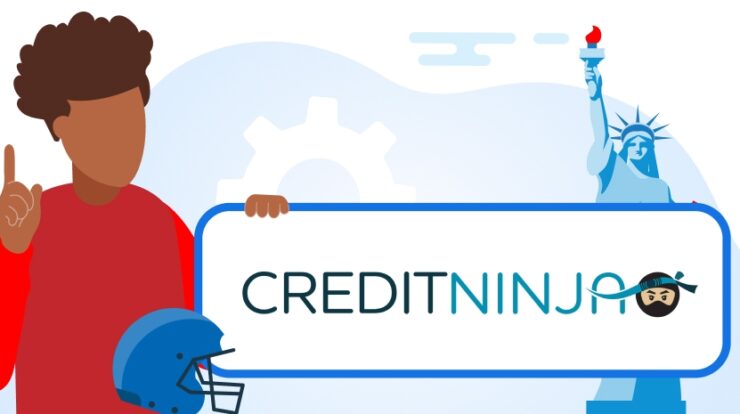
Ways to Create Student-Centered & Remote Learning Environment : Nowadays, Students are the ones who have suffered the most during the pandemic. Not being able to interact in person with schoolfellows and not seeing classmates caused great anxiety and stress. Resultantly, kids are becoming more sensitive, isolated, and secluded. The introvert side is taking the best of them and causing them severe mental disorders. Amidst ongoing situations, remote classes are proved to be futile and less effective and, therefore, the better option should be chosen for making learning for children more effective. However, in-person classes are not possible at the moment; therefore, a better option needs to be opted to make remote learning more impressive.
So, one concept that proves to be more effective in enhancing remote learning is using student-driven remote learning. This way of learning is way more creative and stirs people’s imagination. While teacher-centered learning was all about teacher, where teachers were the ones whose mind was always working, and students would act passively, teachers are the central focus in student-centered learning.
Student-centered learning puts students on the spot, helps them become more creative, and instills in them the ability to work autonomously and with enthusiasm. Due to its immense demand, popularity, and positive feedback, many teachers have now adopted student-centered learning where students are the center of attention.
In student-centered learning, students have the privilege to decide the material they want to learn and the method they want to use to learn the material. It is, therefore, also referred to as personalized learning.
Importance of Student-Centred Learning
- Student-Centred Learning help make the educational process more meaningful and is the best for today’s environment where kids are becoming more independent and want to explore things on their own.
- The Student-Centred learning program also emphasizes using assessments to evaluate students’ performance by involving students and teachers in the assessment process.
- It is the best and the most flexible way to work in small groups or when learning from a distance. Flexibility is the biggest flex nowadays when the pandemic is in its full swing.
Previously, in Teacher-centred learning, teachers were the ones who had to go through immense brainstorming phases and spend hours talking; however, now in the Student-Centred learning environment, students are in the limelight. They are the ones who have to carry the burden of learning, explaining, and figuring things out.
It is pertinent to mention that student-centered learning does not require sideline teachers or diminish their roles. Instead, it makes the process of learning mutual where both the parties work in cooperation and coordination, and the teacher’s expertise and knowledge help them build students’ knowledge.
Especially nowadays, when coming to school is nearly impossible because of the current situations, the educational system has resorted to remote learning procedures by taking classes online. Initially, creating a remote learning environment may be intimidating, but it proves to be the best for creating a student-centered learning environment. This is why many teachers have now adopted this method and are making the most out of it. Therefore, it is proven that creating a student-centered learning environment is possible and quite fruitful online.
Key Factors for improving Student-Centred Learning environment Online
If you want to enhance the student-centered learning environment, it is important to offer your students multiple opportunities for interaction. Following strategies to be used for improving student-centered learning environment online.
Interaction
Interaction and communication are the key points in making learning effective. Through interaction and constantly involving students in your lectures, teachers can help them stay vigilant and remain focused in the lecture. It keeps the environment lively and does not let anyone become passive.
Interactions can be of several types. They can student-content interaction, student-student interaction, and student-teacher interaction. Let’s discuss each of it briefly.
Student-Content Interaction
We know that students should be provided with a platform to learn actively for active student-centered learning. To create such an environment, it is pertinent to make the content intriguing and interesting to reach students well and cope with it emotionally and intellectually.
It is nearly impossible for the lesson to reach students well and for them to cope with it easily if you do not involve them in the process by constantly asking them interesting questions, setting up activities, and interacting. Therefore, interacting with students and creating a healthy environment is essential because active learning is nearly impossible without it.
Now the question comes to the kind of activities required for active learning. So, the first thing we can use for active learning is Bloom’s Taxonomy.
Benjamin Bloom who has made the learning process easier by categorizing learning goals from easiest to most arduous ones, discovers the Bloom’s Taxonomy. The goals include remembering, understanding, applying, analysing, evaluating, and creating.
Now that we have these goals set in the form of an educational study, we can easily check if our activities are challenging enough by comparing them against the given goals. The teachers need to evaluate first if the act of remembering and comprehending is going according to the plan. Afterward, it is also important to do something meaningful and to reflect upon what has been learned at the end.
It is understandable that keeping students focused during online learning is difficult. Students can get easily distracted attending classes within the premises of home where there are many distractions. Therefore, to sort this issue out, it is important to create such learning opportunities where students can get to have a more in-depth student-content interaction, like the flipped classroom method.
In this method, students can prepare for the course beforehand simply by going through lesson content, implying the “remember & understand” element of Bloom’s Taxonomy. This way, the students will be capable to have a free debate and discussion if they have already accumulated knowledge regarding the topic.
Student-Student Interaction
The next step to enhance a student-centered learning environment is to provide an opportunity for learners to interact with each other. However, this element is missing in the online classes and is the most crucial one as well. Now, the best way to have student-student interaction online is to stir up discussion and debates into online lessons, thereby involving the whole class or even smaller groups with the help of breakout rooms. Teachers can also assign students to resolve an exercise or create an original product.
There are several apps available for online classes that allow teachers to split the class into smaller groups so the students’ participation can be maximized and they get the chance to interact with one another to the fullest. The teacher can set a particular time for the breakout room and later redirect everyone to the main room for final discussion. The teacher will have full liberty to check in on any breakout room to check whether the students interact well.
Jigsaw
Introducing Jigsaw puzzles is another amazing way to engage students and maximize their interaction. In this method, a particular topic is broken up into different parts, and later, students are divided into groups, with each group having about 4 to 5 students.
Students would be directed to read the assigned material first. Each group will have to prepare the same topic. Later on, students who have read the same material would be asked to join the expert group and compare their knowledge to evaluate which is more important to share. Afterward, the students will return to the assigned small homegroup to share what they have learned with other acquaintances. Jigsaw proves to be the most effective strategy in learning to work in a group as well as independently, and it helps a lot in implementing Student-centred learning online.
To implement it online, students should be divided into home groups and be given a topic. Instead of asking them to read the text, the teacher can incorporate different methods by incorporating different formats, including videos, graphs, charts, quizzes, and activities.
Towards the end, do not forget to ask students to do self-reflection and ask them about what could be improved for the lessons to come. This way, through jigsaw online, students are learning to interact with other students, learn on their own, collaborate with other students, and all these are the key factors in Student-centred learning.
Personalization
So, in the first part of the strategy, students are supposed to learn autonomously.
The teacher may answer the question, but the students get the chance to infer their learning preferences, such as reading, repeating, and creating a mind map.
Control
Students gain confidence when they are in charge of a topic, and they get the chance to discuss it before sharing it. Each student should be made responsible for one topic. In this way, by giving them a sense of control and responsibility, students are empowered and motivated to do their best via online learning.
In addition to all this, if you wish to have successful student-centered learning, incorporate pair and group work even in online learning. You can use the pair either in the synchronous online lectures or while doing assignments.
Student-Teacher Interaction
Due to ongoing hazardous situations, teacher-student interaction is largely lacking. No teacher can come to the fore and interact with students, which is crucial if teachers want their students to learn more. So, in online classes, teachers can interact with students by asking questions, stirring debates and discussions, using jigsaw and breakout rooms.
Teachers can also substitute the common lectures and memorization methods and incorporate them into learning guidance and active learning technique. She acts as a facilitator whose job is to offer an environment conducive to learning. It will help students accomplish more and have a friendly relation with the teachers.
Pros of Student-Centred Learning.
- The teachers get the chance to learn from one another
- They get to learn from being actively involved and experience things before students
- So, They get the chance to apply what they have learned in practical life.
- They can give genuine, experienced, and good feedback.
- The students learn the social ethics
- They have a deeper understanding of the subject
- It helps students stay focused
- SCL help increase the learning retention
- It makes learning more fun and entertaining
- Students can show the efficiency
- Students get the chance to collaborate, brainstorm, and come up with something new.
- Most importantly, SCL enables students to solve their problems on their own.
Ways to Improve student-centered Learning
- Keep finding methods that are compatible with the integrated technology and enhance learning experiences.
- Make use of the breakout spaces to huddle students together for job purposes and for enhancing collaboration amongst trainees.
- Let students have the charge.
- Seek help from interactive videos and slides. In fact, you can create your own videos.
- Help students become more decisive.
- Seek help from students while scoring assessments.
- Don’t create a typical environment where one has the charge. Help each other, be collaborative and respect each other’s opinions.
- Instead of giving typical homework, better give activities that help them learn better and are more fun to do.
- Keep seeking new ideas.
- Break the students in the breakout room and ask them to discuss, evaluate, analyze, and quiz the topics they have discussed together.
- Present an issue and ask your trainee to look for a problem. If they do not know the answer, send them to search links.
- Try to conceptualize each session.
- Allow one trainee to take the quiz from other trainees. Use websites like Google Form, Survey Monkey, and Microsoft Form.
- Have a Question-Answer session.
- Towards the end, hold a debate between the students.
Also, Check :
There are other informative ways to engage students. Do not forget the fact that you are the facilitator, and you are supposed to provide a congenial environment to students where they can learn together by mutual cooperation and coordination.


